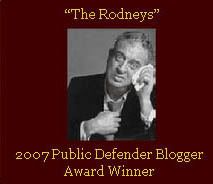A Walk In The Lost World Of Quintana Roo

The Coast of Quintana Roo, between Bahia Soliman and Tankah
In 1958, Michel Peissel, who at age 21 was about to enter Harvard Business School, made a solo journey on foot from what would eventually become Cancun, Quintana Roo, Mexico, down the Caribbean Coast to Belize, which he described in his book, The Lost World Of Quintana Roo.
Quintana Roo in 1958 was the frontier. There were no roads. There were no railroads. There was no electricity. There was virtually no civil authority from the central government in Mexico City. The ancient sites of the Maya were mostly unexcavated and unmapped. The economy of the area was what it had been for thousands of years: subsistence milpa farming (corn, squash, beans), hunting, fishing and gathering. The outside world had made only two relatively recent, significant encroachments: coconut farms (cocals) to the coast, and in the interior, chicleros harvested chickle for chewing gum.
In 1847 the War of the Castes broke out between the Mexican Central Government and the Mayan people in the Yucatan Peninsula. Eventually, the Mayans surrounded the colonial city of Merida, into which they had driven the Mexican army, and the city was about to fall. To the besieged Mexicans' complete surprise and relief, the Mayans suddenly withdrew. It was time to plant corn, and under the rules of war the Mayans (but, of course, not the Mexicans) followed, planting was far more important than fighting. The Mexican Government responded by splitting the Yucatan into three states (Yucatan, Quintana Roo, and Campeche), and the war officially ground on until 1915 when, in a scene that must have resembled the US departure from Saigon, the Mexican forces gave up and unceremoniously withdrew from Quintana Roo. It was not until 1935 that the Mayans conducted a ceremony in Tulum to acknowledging at long last the central authority of the Mexican Government. It was through this world that Peissel made his journey.
Last week, I went out for a two hour walk on the beach from Bahia Soliman south through Tankah 3. I wanted to try to get a tactile experience of what Peissel's beach walk may have been like. The beach and the headlands and the mangrove are all much the same as described in the book. But, of course, instead of intense vegetation growing right up to the beach, there are now houses and buildings and people. There is also plastic on the beach in a quantity that would not have been possible in 1958.
What emerges from my walk is the contrast between the soft white sand of the beach and the very tough and moonlike surface of the headlands and the piles of dead coral to walk on:

The Headland North of Tankah 3

Mounds Of Coral On The Headland

Coral To Walk On
As I walk, I imagine what Peissel's very long walk must have been like for him. I include the enormous distance he covered and the repetitiousness of headlands and bays. I add to the dense and impenetrable mangroves that grow right up to the beach, huge clouds of mosquitoes. I add to my pictures of the coral strewn headlands intense sun and heat and humidity. I mentally remove my comfortable hiking shoes and impose their 1950's equivalent on my feet. I mentally remove my shorts and t-shirt and add the jacket and pants that Peissel wore. I add an uncomfortable, bulky, old school backpack. I add a desire to find and record ruins that are just inside the mangrove and the frustration of neither speaking Mayan nor being entirely welcomed. I add a fear that stalked Peissel for his entire journey of robbers who unrestrained by civil authority would want and might try to take whatever money or property he might have had. And I hear the hot wind, blowing off the sea, making the coco trees clack.
This turns a beach walk into a great adventure. And it makes Michel Peissel's book, The Lost World of Quintana Roo, a treasure worth reading. It's an essential document before a trip to Quintana Roo.
Etiquetas: Bahia Soliman, Michel Peissel, Tankah, The Lost world of Quintana Roo






3 Comments:
Not too long ago, I tried to find some of the small ruins Peissel found and I met with some success.
Here is a link to some photos. Check out in particular:
XAMACH RUINS
RECODO SAN JUAN
CHAKALAL
(ROADSIDE RUINS is on the Punta Allen Rd but I am not sure if the author came across it)
http://picasaweb.google.com/tony65
Not too long ago, I tried to find some of the small ruins Peissel found and I met with some success.
Here is a link to some photos. Check out in particular:
XAMACH RUINS
RECODO SAN JUAN
CHAKALAL
(ROADSIDE RUINS is on the Punta Allen Rd but I am not sure if the author came across it)
http://picasaweb.google.com/tony65
One interesting part of Peissel's trek was when he came upon an expedition by Robert Marx along the coast. They were salvaging an old canon that was laying on the beach.
I always that it was a strong coincidence that he would happen across Robert Marx, famed treasure seeker, there in the wilds of Yucatan.
What an adventure! I highly recommend the book. I've been to Yucatan a few times, and examined a few ruins. Very much worth it for hardier souls looking for adventure. I came across no chicletas.
Publicar un comentario
<< Home